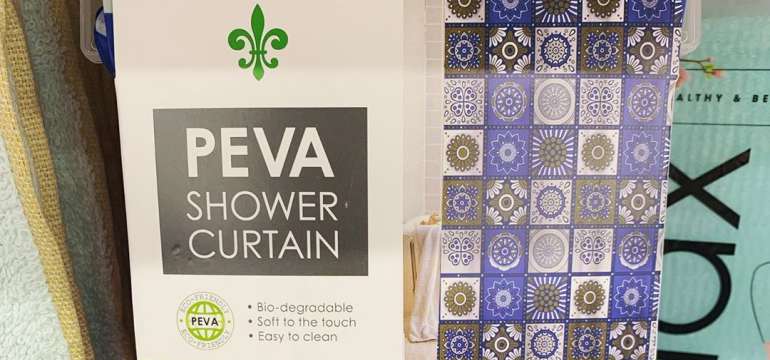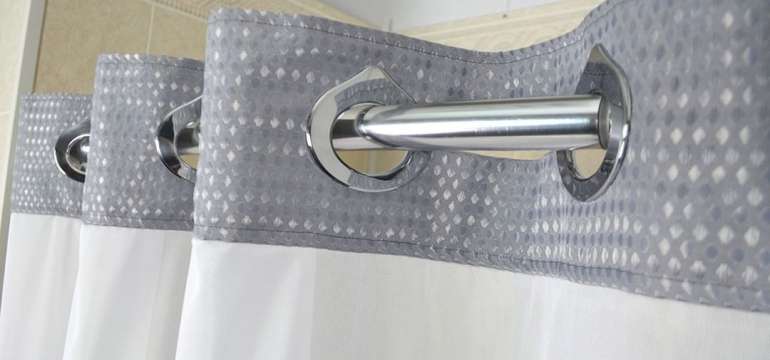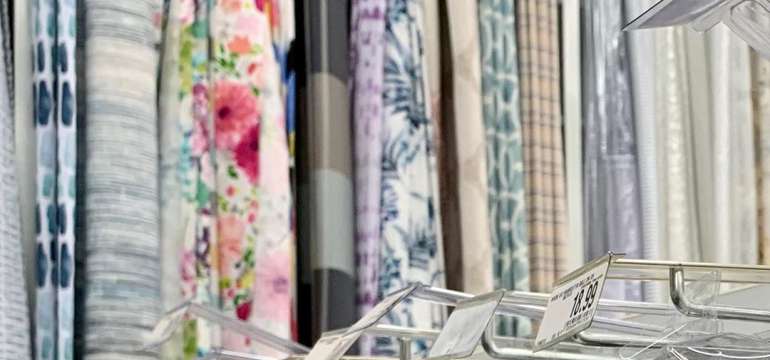When you’re furnishing your home, you want it to be a safe, healthy, environmentally friendly space. However, it can sometimes be hard to identify which products and substances are the best choices for furnishing your home and serving your needs.
For example, PEVA material has come into more widespread use in the past decade or so, as a replacement for other materials that were found to release toxic chemicals. Before you make decisions about the use of PEVA or its alternatives in your home, it’s important to understand the composition and applications of this man-made product.
Check out our guide to at-home uses for PEVA material so you can be better informed about the health and safety of the commercially manufactured items that enter your home.
What Is PEVA Material?

PEVA stands for polyethylene vinyl acetate, or sometimes simply ethylene vinyl acetate. It is considered to be biodegradable, and it’s also chlorine-free.
Is PEVA plastic? Simply speaking, the answer is yes. It’s a copolymer of vinyl acetate and ethylene, with the vinyl acetate composing anywhere from 10 percent to 40 percent of the material.
This thermoplastic material has several properties that make it commercially desirable for manufacturers. It’s soft, flexible, waterproof, and glossy, so it’s perfectly suited for products that require water resistance along with malleability. The common household shower curtain is the perfect example of a PEVA product.
PEVA or Vinyl Shower Curtain
 If you’re installing a new shower in your house, or if you’re refurbishing one, you’ll probably be shopping for another shower curtain soon. In this case, you’ll be facing a choice between two types—PEVA shower curtains or vinyl (PVC) shower curtains.
If you’re installing a new shower in your house, or if you’re refurbishing one, you’ll probably be shopping for another shower curtain soon. In this case, you’ll be facing a choice between two types—PEVA shower curtains or vinyl (PVC) shower curtains.
You may be most used to shower curtains made of plain vinyl or PVC (polyvinyl chloride). This material has a strong odor that’s actually indicative of the toxic chemicals that seep from it. The smell is usually a direct result of the chlorine or chloride used in the product.
PVC is useful, versatile, and flexible, but it has a significant drawback. It’s toxic, not only to the people who use it, but to the environment. Once a PVC or vinyl product has reached the end of its life cycle and has been disposed of in a landfill, it doesn’t degrade. It just sits there, leaking harmful chemicals into the environment. Unfortunately, PVC was traditionally used in packaging, car parts, construction materials, and toys.
Thankfully, new research has raised the level of awareness about the harmful BPAs and phthalates that PVC contains. Phthalates have been dubbed a probable human carcinogen, or a likely cause of cancer, by the Environmental Protection Agency. Since 2009, these harmful substances have been prohibited from use in children’s products.
They are also being phased out of dishes, kitchen storage containers, and other items that would come into contact with food. However, they are still in use in other products, such as vinyl shower curtains.
Consumers and manufacturers are becoming more and more aware of the potential toxicity of PVC and the products created from it. It’s a good idea to select shower curtains that will offer the function you need without introducing additional toxins into your home.
PEVA is completely PVC-free. It is considered more earth-friendly and environmentally conscious than PVC, and it’s also a healthier material to have in your shower area, rather than PVC. When you’re buying a shower curtain for your home, definitely make the choice to purchase a PEVA product rather than one containing vinyl or PVC.
What Else Is PEVA Used For?
Thanks to its non-chlorinated and biodegradable nature, PEVA is used in a broad range of different products. It is waterproof, which makes it the optimal choice for any products or items that either need to be completely waterproof or must have a certain level of water resistance.
Plastic Wrap
Do you know the thin sheets of stretchy plastic wrap that you can seal over containers of food or wrap food items in? Often, that plastic wrap is a type of PEVA.
Sports Gear
PEVA is often found in the exterior surface of boxing gloves, as well as in premium-quality types of soccer cleats. You’ll also find it in bicycle saddles and ski boots, hockey pads and wakeboard boots, helmets, and mixed martial arts gloves.
Toys and Children’s Items
Many toys that include plastic parts have PEVA in them. Since the ban on PVC in kids’ products, PEVA has replaced it in most situations where a type of vinyl is needed. Waterproof baby bibs usually have some PEVA as part of the waterproof backing, for example.
Covers
The covers, plastic sheets, or tarps for various items in and around your home typically include some level of PEVA. Mattress protectors are often made with PEVA, and so are car covers and plastic table coverings. Covers and bags, large and small, from your pool cover to your wife’s cosmetic bag, are likely made of PEVA or a similar material.
Shoes
In addition to being used in high-level sports-related footwear, PEVA is also used in other types of shoes and rain boots. You can check the manufacturer’s information on the website if you’re curious about the composition of your shoes.
Craft Items
This one may surprise you! The little sticks of solid adhesive that you insert in hot glue guns are usually made from PEVA or EVA, along with resin or wax. Once heated, the hot glue sticks melt and provide a stretchy, strong, waterproof, malleable adhesive for craft projects. Children’s foam stickers often incorporate PEVA or EVA as well.
Thin sheets of EVA-containing foam are sometimes used to craft artificial flowers. Some cosplayers use PEVA/EVA to create lightweight costumes for conventions and other events.
Other Items
Other unexpected items that contain PEVA or EVA include foam pool noodles or flutterboards, foam bodysurfing boards, garden kneelers, certain flip-flop soles, and skimboard traction pads. Orthotics devices and plastic mouth guards often use EVA. Plastic model kits have EVA in their parts, and EVA is also frequently involved in the process of waterproofing and conditioning leather and products crafted from leather.
Perhaps most surprising, though, is the presence of EVA in trace amounts within cigarettes and nicotine transdermal patches.
More Benefits of PEVA Material
In addition to eliminating probable carcinogens and potential toxins from your home, you’ll be supporting a more earth-friendly plastics industry. PEVA and EVA products are biodegradable, which means that instead of sitting in landfills for centuries, they will slowly decompose and return to the earth without causing harmful chemical effects.
Did you know that PEVA shower curtains are usually easier to clean? They don’t have the coating that PVC shower curtains have, so you’ll be able to get the grime off them more readily.
In addition, PEVA shower curtains are generally softer and more flexible. They hang better in the shower, without the “crunch” and stiffness of a PVC shower curtain. Plus, you won’t have to endure that strong chloride smell that you’d have to put up with for several days after installing a PVC shower curtain.
Unfortunately, PVC shower curtains are still popular and appear in many stores, so you may have to look closely before you find a PEVA variety that works for you.
Other Types of Non-Toxic Shower Curtains

In addition to PEVA shower curtains, there are other non-toxic alternatives. Nylon shower curtains are a safe choice, with significant water resistance and a fair amount of resistance to mold and mildew as well.
Cotton shower curtains are even safer in terms of toxicity. They are made of primarily natural fabric, and they won’t contaminate your home with harmful particles.
However, they do tend to get wet quickly, and they don’t confine moisture to the shower stall as well as a plastic or vinyl shower curtain would. In addition, they are very susceptible to mildew and mold, and therefore would need to be washed or treated often to prevent the growth of mold and mildew. The mold itself can be a health hazard, not to mention the unpleasant smell that mildew produces.
Hemp shower curtains, like cotton shower curtains, are natural products composed of earth-friendly elements and are therefore very safe to use. However, they are even less water-resistant than cotton versions, and they can be quite susceptible to mildew and mold as well.
PEVA shower curtains are the cheapest option, and they offer the highest water resistance and the best protection against mold and mildew. While they are much safer than PVC shower curtains, they do pose a mild risk as far as the release of chemicals into the air of your home.
More tests and studies are necessary to identify the true risk level of PEVA; but for now, all signs and studies indicate that PEVA is definitely far less toxic than PVC and therefore is an acceptable choice for your home.
Choosing PEVA Material
It’s a good idea to double-check all the plastic or vinyl-type products in your home and find out whether or not they contain PVC. If they do, they might be leaking harmful BPAs and phthalates into your home. You don’t want that toxicity to be present, especially when the use of these products could increase the risk of cancer for you and your loved ones.
Whenever possible, identify PVC-containing items and replace them with products containing PEVA material instead. This can be a costly process, so you can do it little by little, gradually phasing out questionable PVC or vinyl materials from your home and choosing to purchase less-toxic PEVA products instead. Make the safe choice for your family, your friends, and yourself, and you’ll feel more at ease with the health and security of your home and its furnishings.
- Using Borax in the Dishwasher - May 27, 2020
- Towel Ring Height and Other Fixtures: Proper Measurements - May 1, 2020
- Homemade Paint Removers for Every Surface - April 27, 2020
